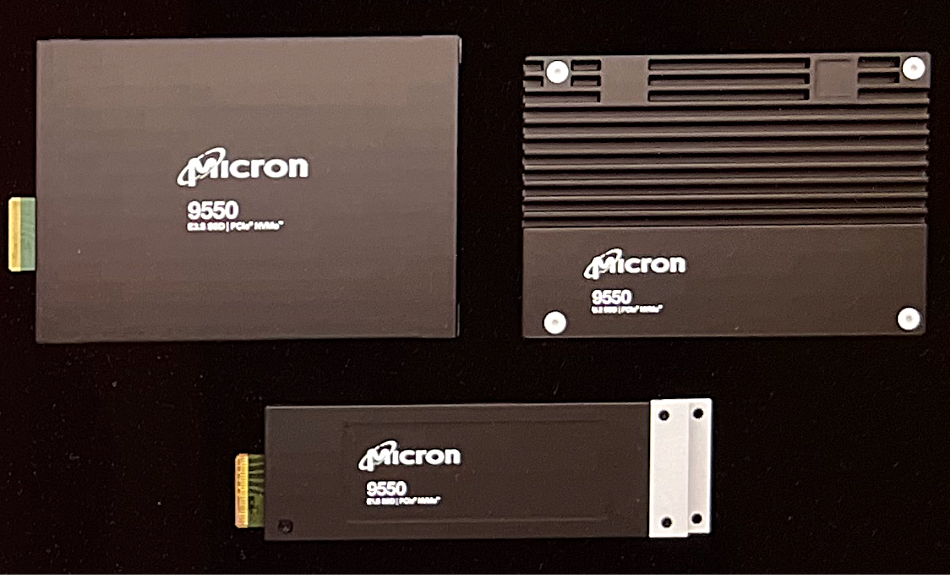Micron has launched a 9550 datacenter SSD using the PCIe gen 5×4 bus, and it looks to be among the fastest models currently available.
Update: Micron answers to questions about the new drive added; 26 July 2024. Update removed 27 July 2024! Micron sent invalid data.
The 9550 is built from 232-layer NAND in TLC (3 bits/cell) format, now termed gen 8 by Micron. It comes in three physical versions – E1.S, E3.S, and U.2. Micron classes it as a cloud (hyperscaler) high-performance and enterprise server NVMe drive developed with three trends in mind. AI workloads need more storage performance and infrastructure scalability, while electrical efficiency is increasingly important.

The 9550 follows on from Micron’s PCIe gen 4 7450 SSD, which used 176-layer NAND, and the 7500 built from 232-layer flash. Both the 7450 and 7500 came along after Micron’s earlier 7300 and 9300 PCIe gen 3 datacenter SSDs. The 7500 has faster sequential read and write bandwidth and random read IOPS than the 7450. With PCIe gen 5 bus support, the same 6-plane design, and Micron’s in-house controller ASIC and firmware, the 9550 is purported to be even faster.
A couple of charts show the maximum IOPS and bandwidth performance progression as the layer count and PCIe generations progress with these SSDs:

The 9550 demonstrates a major step up in performance compared to the previous generation. This is mainly due to the PCIe gen 5 bus being twice as fast as PCIe gen 4 but also helped by Micron’s controller.
There are two versions of the 9550, the read-intensive 9550 PRO supporting 1 drive write per day (DWPD) over its five-year warranty period, and the mixed-use 9550 MAX supporting 3 DWPD. The gumstick-sized E1.S format is only available with the 9550 PRO variant. Available 9550 PRO capacities are 3.84, 7.68, 15.36, and 30.72 TB. The 9550 MAX has lower capacity levels due to the over-provisioning needed to support the 3DWPD rating at 3.2, 6.4, 12.8, and 25.6 TB.
Both versions support TCG Opal 2.01, secure erase, boot and signed firmware, power loss and enterprise data path protection, and OCP 2.0.
The 9550 is claimed by Micron to be faster than competing PCIe gen 5 devices from Samsung (1743) and Kioxia (CM7-R) except at sequential reading, as Micron’s numbers show:

It’s also said to be quicker and more power-efficient at AI GNN (Graph Neural Network) workloads:

This SSD efficiency is reflected in the total server energy used during the GNN training run, with the 9550-equipped server using 15 kJ, the Samsung 1743 using 21 kJ, and the server using Kioxia CM7-R SSDs needing 18 kJ. The server in question is a dual Xeon 8568Y, 48-core chassis fitted with an Nvidia H100 GPU.
Micron claims its 9550 is both faster than competing Kioxia and Samsung drives, and more power-efficient, leading to lower server electricity loads during AI workload runs.








